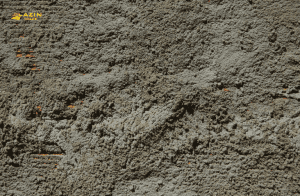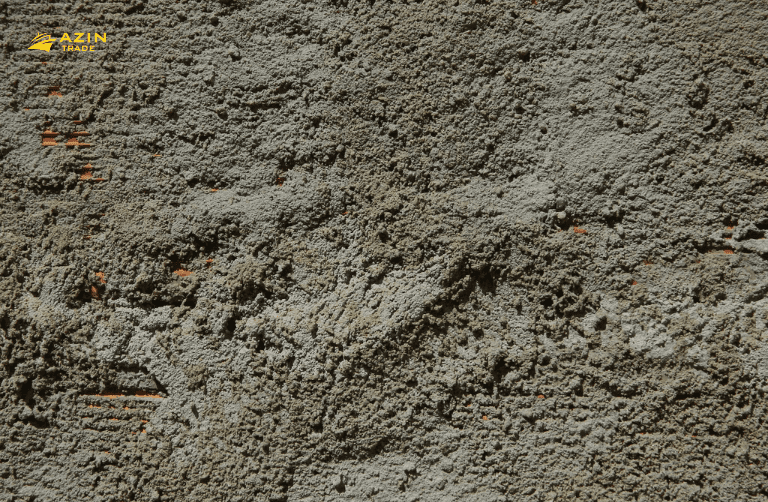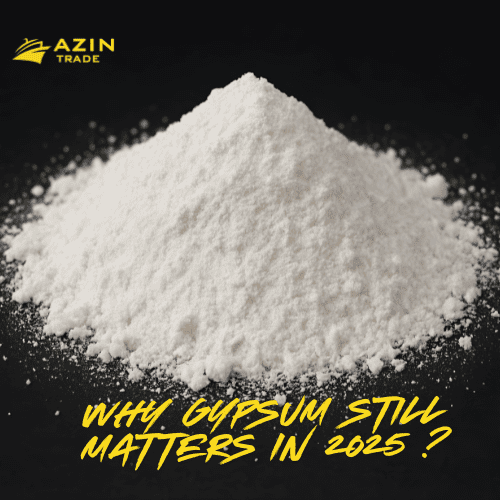
cement clinker
Introduction
In the world of construction, the quality of materials used plays a crucial role in the durability and strength of structures. Two of the most vital components in this industry are cement and clinker. Iran, a major player in the global cement and clinker market, is known for its high-quality products and competitive pricing. This comprehensive guide will delve into the significance of Iran cement and clinker, their benefits, the types available, and how to select the best material supplier for your needs. We will also explore the Iran export and import market for these materials, highlighting their impact on global construction.
Table of Contents
Understanding Cement and Clinker
Overview of the Iran Cement and Clinker Industry
Benefits of Using Iran Cement and Clinker
Types of Iran Cement and Clinker
Applications of Iran Cement and Clinker in Construction
Choosing the Right Material Supplier
Quality Assessment of Iran Cement and Clinker
Environmental Impact and Sustainability Practices
Iran Export and Import Market for Cement and Clinker
Case Studies: Successful Projects Using Iran Cement and Clinker
Future Trends in the Iran Cement and Clinker Industry
Challenges and Solutions in the Iran Cement and Clinker Market
Conclusion
Understanding Cement and Clinker
Cement is a binding material used in construction to set, harden, and adhere to other materials, forming a solid structure. Clinker, on the other hand, is a nodular material produced in the kilning stage during the production of cement. The quality of clinker directly affects the final cement product, making it essential for construction.
The production process of cement involves grinding clinker with other materials, such as gypsum, to produce the final product. This makes clinker an essential intermediate product in the cement manufacturing process. High-quality Iran cement and clinker ensure the strength and durability of construction projects.
Overview of the Iran Cement and Clinker Industry
Iran is one of the top producers of cement and clinker in the world. With a rich availability of raw materials, advanced manufacturing techniques, and strategic geographical location, Iran has established itself as a leading exporter of these vital construction materials.
The country’s cement industry is supported by a network of over 70 factories, producing millions of tons of cement annually. This robust production capacity ensures a steady supply of Iran cement and clinker to both domestic and international markets. The industry’s growth is driven by continuous investments in technology and infrastructure, making Iran a reliable material supplier in the global market.
Benefits of Using Iran Cement and Clinker
Using Iran cement and clinker offers numerous advantages for construction projects:
High Quality: Iranian cement and clinker are known for their adherence to international quality standards, ensuring durability and strength in construction.
Cost-Effective: Competitive pricing makes Iran cement and clinker an affordable option without compromising on quality.
Consistency: Advanced manufacturing processes ensure consistent quality across different batches.
Availability: With a large production capacity, these materials are readily available for large-scale projects.
Eco-Friendly Practices: Many Iranian manufacturers adopt sustainable practices, reducing the environmental impact of cement and clinker production.
Types of Iran Cement and Clinker
Iran produces a variety of cement and clinker types to meet diverse construction needs. Some of the most common types include:
Ordinary Portland Cement (OPC): The most widely used type of cement, suitable for general construction purposes.
Sulphate Resistant Cement: Ideal for structures exposed to high sulphate environments, such as coastal areas.
White Cement: Used for aesthetic applications and decorative projects where appearance matters.
Pozzolanic Cement: Enhances durability and chemical resistance, making it suitable for marine and underground structures.
Low Heat Cement: Designed for large-scale constructions like dams to minimize the heat of hydration.
Rapid Hardening Cement: Provides early strength, beneficial for quick construction schedules.
Each type of Iran cement and clinker is designed to meet specific requirements, ensuring optimal performance in various applications.
Applications of Iran Cement and Clinker in Construction
Iran cement and clinker are used in a wide range of construction applications, including:
Residential Buildings: Providing the foundation and structural elements for homes and apartments.
Commercial Structures: Used in the construction of offices, shopping malls, and other commercial buildings.
Infrastructure Projects: Essential for roads, bridges, dams, and other public infrastructure.
Industrial Facilities: Used in factories, warehouses, and other industrial constructions.
Decorative Elements: White cement and other specialized types are used for tiles, sculptures, and architectural details.
The versatility of Iran cement and clinker makes them suitable for almost any construction project, ensuring durability and high performance.
Choosing the Right Material Supplier
Selecting the right material supplier for Iran cement and clinker is crucial for the success of your construction project. Here are some factors to consider:
Reputation: Look for suppliers with a strong reputation for delivering high-quality materials consistently. Check reviews and ask for references from past clients.
Certification: Ensure the supplier adheres to local and international standards. Certification from recognized bodies can be a good indicator of quality.
Supply Chain: A reliable supplier should have a robust supply chain to ensure timely delivery. This is especially critical for large-scale projects where delays can be costly.
Customer Service: Excellent customer service can make a significant difference. A supplier that provides support and addresses issues promptly can save you a lot of stress.
Price: While cost is a crucial factor, it shouldn’t compromise quality. Look for a supplier that offers competitive pricing with flexible payment terms.
By carefully evaluating these factors, you can choose a material supplier that meets your needs and ensures the success of your construction project.
Quality Assessment of Iran Cement and Clinker
Evaluating the quality of Iran cement and clinker involves several tests and checks:
Chemical Composition: Ensures the cement and clinker have the right balance of ingredients for optimal performance.
Fineness: Determines the particle size, with finer particles providing greater strength.
Consistency: Ensures uniform quality in every batch.
Compressive Strength: A critical test to determine the load-bearing capacity.
Setting Time: Measures how long the cement takes to set. It should neither set too quickly nor too slowly.
By conducting these evaluations, you can ensure that the Iran cement and clinker you choose meet the necessary standards for your project.
Environmental Impact and Sustainability Practices
The cement and clinker industry is known for its environmental impact, primarily due to CO2 emissions during production. However, many Iran cement and clinker manufacturers are adopting sustainable practices to mitigate these effects:
Energy Efficiency: Implementing energy-efficient technologies in production to reduce greenhouse gas emissions.
Waste Management: Utilizing industrial byproducts and waste materials in the production process to minimize waste.
Green Certifications: Many Iranian cement and clinker plants are seeking certifications such as ISO 14001 to demonstrate their commitment to environmental management.
Recycling Initiatives: Promoting the recycling of concrete and other construction materials to reduce environmental impact.
These efforts contribute to more sustainable construction practices and enhance the overall environmental performance of Iran cement and clinker.
Iran Export and Import Market for Cement and Clinker
Iran is a significant player in the global export market for cement and clinker. The strategic location, coupled with high-quality products and competitive pricing, makes Iran cement and clinker attractive to international buyers. The Iran export and import market for these materials is robust, with extensive trade relations with countries across Asia, Africa, and Europe.
Export Market
Key Export Destinations: Major importers of Iran cement and clinker include Iraq, Afghanistan, Kuwait, and Pakistan, among others.
Export Growth: Continuous investment in production capacity and quality improvement has led to significant growth in exports.
Logistics: Efficient logistics and proximity to major shipping routes facilitate timely delivery to international markets.
Import Market
While Iran is predominantly an exporter, it also imports certain raw materials and equipment necessary for the cement and clinker production process. The Iran export and import dynamics ensure that the industry remains competitive and capable of meeting both domestic and international demands.
Case Studies: Successful Projects Using Iran Cement and Clinker
Several notable construction projects have successfully utilized Iran cement and clinker, showcasing their reliability and performance:
Tehran Metro Expansion
The extensive metro network in Tehran used Iran cement and clinker for its tunnels and stations, ensuring strength and durability under challenging conditions. This project highlights the materials’ ability to withstand heavy usage and environmental stress.
Milad Tower
One of the tallest towers in Iran, Milad Tower’s construction relied on high-quality Iran cement and clinker to achieve its impressive height and structural integrity. The project demonstrates the materials’ capability to support large-scale, complex structures.
Isfahan Sports Complex
This large-scale sports facility used Iran cement and clinker to create robust and resilient structures, capable of hosting various sporting events. The complex stands as a testament to the durability and versatility of these materials.
These case studies illustrate the broad applicability and high performance of Iran cement and clinker in diverse construction scenarios.
Future Trends in the Iran Cement and Clinker Industry
The future of the Iran cement and clinker industry is shaped by several emerging trends:
Technological Advancements
Integration of AI and IoT to optimize production processes and improve quality control is expected to drive significant advancements. These technologies enable better monitoring, efficiency, and consistency in manufacturing.
Sustainable Practices
Increased focus on developing green cement and adopting sustainable manufacturing practices is crucial. Innovations such as carbon capture and utilization (CCU) and alternative fuels can help reduce the carbon footprint of cement production.
Global Expansion
Expanding export markets to meet international demand for high-quality cement and clinker is a key focus. By establishing new trade relations and enhancing existing ones, Iran can continue to grow its presence in the global market.
Innovation in Products
Development of new cement and clinker types and formulations to cater to specific construction needs is ongoing. This includes creating products that offer enhanced performance, such as high-strength and quick-setting cements.
Regulatory Compliance
Adhering to stricter environmental regulations and standards to ensure sustainable growth is imperative. Compliance with international standards will help Iranian producers maintain their competitive edge in the global market.
Staying abreast of these trends can help construction professionals make informed decisions and capitalize on new opportunities in the Iran cement and clinker market.
Challenges and Solutions in the Iran Cement and Clinker Market
Despite its strengths, the Iran cement and clinker industry faces several challenges:
Economic Sanctions
International sanctions can impact the export potential and financial stability of the industry. To mitigate this, diversification of export markets and increasing domestic consumption are vital.
Infrastructure Limitations
Inadequate infrastructure can affect the efficient distribution and transportation of cement and clinker. Investing in logistics and transportation infrastructure can help overcome these limitations.
Environmental Concerns
Addressing the environmental impact of cement and clinker production requires continuous investment and innovation. Implementing green technologies and practices can help reduce the industry’s carbon footprint.
Supply Chain Disruptions
Global supply chain disruptions can affect the availability of raw materials and equipment. Developing local supply chains and maintaining strategic reserves can enhance resilience.
Solutions:
Diversifying Markets: Expanding into new international markets to reduce dependency on traditional export destinations.
Infrastructure Investments: Improving logistics and infrastructure to ensure efficient supply chain management.
Sustainable Practices: Investing in research and development to create environmentally friendly cement and clinker and reduce the industry’s carbon footprint.
Strategic Partnerships: Forming alliances with international companies to enhance technology transfer and market access.
By addressing these challenges through innovative solutions and strategic planning, the Iran cement and clinker industry can continue to thrive and expand.
Conclusion
Iran cement and clinker offer a unique combination of quality, affordability, and versatility, making them excellent choices for a wide range of construction projects. By understanding the benefits, types, applications, and challenges associated with these materials, construction professionals can make informed decisions that enhance the success and sustainability of their projects. Whether for residential, commercial, industrial, or infrastructure projects, Iran cement and clinker provide the reliability and performance needed to achieve outstanding results.
Key Takeaways
Iran cement and clinker are renowned for their high quality, affordability, and diverse applications.
Understanding the different types and their specific uses can help in selecting the right product for your project.
Successful projects using Iran cement and clinker demonstrate their reliability and versatility.
Sustainable practices and future trends in the industry are shaping the growth and development of Iran cement and clinker.
Addressing challenges through innovative solutions and market diversification can enhance the industry’s resilience and success.
By leveraging the strengths of Iran cement and clinker, construction professionals can achieve superior results and contribute to the advancement of sustainable construction practices. The robust Iran export and import market for these materials further emphasizes their global significance, making Iran a pivotal player in the construction industry.




